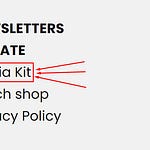Recut is a powerful tool designed to automatically detect and remove silence from videos, making it ideal for creators, consultants, and editors looking to shorten footage without manual effort. By using Recut, you can transform a 50-minute video into a concise 32-minute version, saving time and enhancing viewer engagement. This guide, based on practical usage, walks you through the process step by step.
Why Use Recut for Video Editing?
Efficiency Gains: Reduces video length by cutting pauses, ums, and ahs.
User-Friendly Interface: Simple drag-and-drop functionality.
Versatility: Suitable for consultations, tutorials, and content creation.
Affordable Access: Check out hi.getivan.com/recut for potential discounts.
Getting Started with Recut
To begin, download and install Recut from the official site. Once launched, the software presents a clean interface ready for your video files.
Uploading Your Video
Open Recut.
Drag and drop your video file into the main window.
The software automatically loads the video and applies silence detection based on previous settings.
Adjusting Silence Detection Settings
Navigate to the “Silence” tab in the upper right corner for customization:
Recommended Settings: Set to “Super” mode and manually adjust the threshold to 0.005 for optimal results.
Alternative Options: For lighter videos, use a lower setting with “Auto” enabled.
Impact Example: These settings can reduce a 50-minute video to 32 minutes by eliminating unnecessary pauses.
Exporting Your Edited Video in Recut
When satisfied with the detection:
Click the “Export” button in the upper right.
Select “Audio/Video” and choose MP4 format.
Note: This method takes longer but produces a ready-to-use file without additional software.
Tips for Direct Export
Ideal for quick jobs where no further editing is needed.
Experiment with settings to balance aggressiveness—more extreme for shorter videos, less for natural flow.
Integrating Recut with DaVinci Resolve
For advanced editing, export from Recut and import into DaVinci Resolve (free or Studio version).
Exporting from Recut for DaVinci
Choose FCP XML export format for seamless timeline transfer.
Importing into DaVinci Resolve
Go to File > Import > Timeline.
Select the exported XML file.
Set mixed media frame rate and format to “Resolve.”
The timeline loads with pre-made cuts, allowing manual cleanup of short gaps (e.g., mouse clicks).
Advanced Editing in DaVinci Resolve
Creating a Compound Clip
On the Edit page, select all clips (Ctrl+A).
Right-click, and choose “New Compound Clip”, to unify the timeline for color grading.
Project Settings for Color Management
Under File > Project Settings > Color Management:
I use Rec.2020 for a wide color range, which I prefer for various reasons, but can also require a little color correction.
Defaults like Rec.709 may be perfectly acceptable, depending on your source video files.
Color Correction Basics
If Rec.2020 selected, you may need to switch to the Color tab.
Adjust Lift to -0.05 for blacks.
Set Gamma to 0.05 for a subtle saturation boost.
This simple tweak enhances personal videos and consultations.
Audio Enhancements
In the Fairlight tab:
Apply basic noise reduction based on your room’s profile (e.g., fan noise).
Set channel levels to 6 and bus to 3 for balanced sound.
Studio Version Exclusive: Use AI Auto Mix for podcast-like audio quality.
Delivery and Rendering
In the Delivery tab:
Set to medium quality with automated encoding.
Use “Video Data Level” to match Recut’s output.
Add to render queue and export—faster than Recut’s direct method.
Consider storage costs (e.g., Google Drive) when choosing quality levels.
Additional Tips and Best Practices
Tinkering with AI: Explore scripting in DaVinci Resolve Pro to auto-detect short artifacts.
Workflow Consistency: Establish a color space routine for all projects.
When to Skip Advanced Editing: If the video is already perfect post-Recut, direct export suffices.
Resources: Visit hi.getivan.com/recut for the software and more details.
By following this tutorial, you’ll master an efficient video editing pipeline that saves time and improves quality. For more tips, subscribe, below. God bless!










